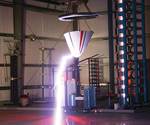After lightning strikes: Repair considerations
When lightning does strike, aircraft LSP system repairs must be done correctly to ensure restoration of protection.
Share
Read Next
“Lightning strike is a huge problem for any aircraft,” says Paul Knudsen, a composites repair instructor with FlightSafety International West Palm Beach Learning Center (West Palm Beach, Fla.). His focus is on training composites technicians and designers to recognize the paths that lightning can take through a structure in a variety of fixed-wing aircraft and helicopters, and then determine how to make repairs that ensure lightning strike protection (LSP) restoration.
“Inspection is key — you have to look for the entrance and exit points and for pinholes,” he notes, adding that looks can be deceiving: “Sometimes, the outer surface burns look like pepper sprinkled over the paint.” Because every aircraft model employs a different LSP system, inspection and repair is model-specific.
Where damage to the LSP mesh or interwoven wire fabrics and underlying laminate has occurred, the area(s) must be sanded and scarfed down to undamaged plies. After the repair is complete and cured, Knudsen says, the focus is on the LSP repair, which is actually “two separate repairs.” Knudsen typically replaces the burned mesh or expanded foil using an epoxy adhesive like that supplied by Magnolia Advanced Materials Inc. (Chamblee, Ga.) so that the mesh is encapsulated by the resin, to prevent surface porosity and moisture ingress. He stresses that checking the conductivity of the LSP system with a milliohm meter is crucial. In addition, metallic strips or grounding straps should be inspected to ensure conductivity across the plane’s outer surface. After conductivity has been restored, the repaired surface can be repainted.
Related Content
-
Reducing accidental separator inclusion in prepreg layup
ST Engineering MRAS discusses the importance of addressing human factors to reduce separator inclusion in bonded structures.
-
Women in the Composites Industry brings together women for networking, educational opportunities
Aiming to support the growth of women in this industry, the WCI industry group and its partners recently held its first live training event hosted by Owens Corning.
-
Belzona opens fifth European SuperWrap Training Centre
Global training facilities provide intensive, first-class installer and supervisor training for proper use and application of Belzona composite pipe and tank repair systems.













